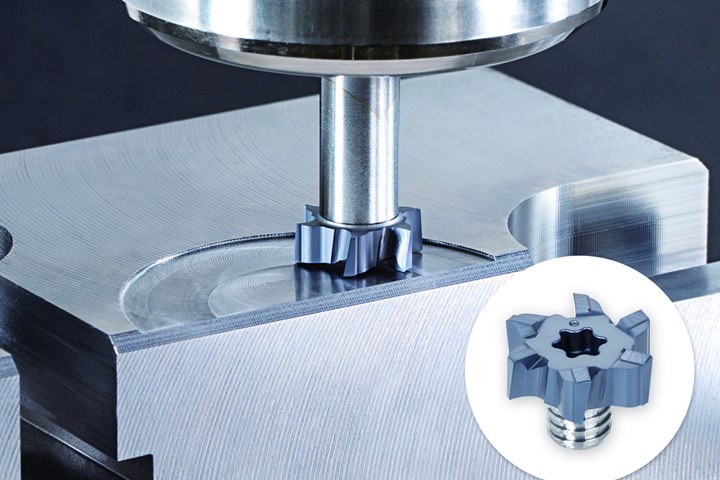VFM Milling Head Enables Face Milling with Exchangeable-Head End Mills
The new addition to the Tungaloy TungMeister series of exchangeable-head end mill systems is designed to reduce a significant amount of tool changeover time for additional efficiency.

Photo Credit: Tungaloy
Tungaloy America Inc. introduces a new VFM-style milling head to the TungMeister series of exchangeable-head end mill systems to enable face milling operations (see “DrillForce-Meister Tackles Large Diameter Flat Bottom Hole Drilling”).
According to the company, TungMeister is designed to reduce a significant amount of tool changeover time through its ability to replace used heads instead of an entire tool. Short setup time is reduced to one tenth of the time it would typically take to replace solid carbide end mills for maximum productivity and cost effectiveness. With more than 13,000 possible head-shank combinations available, TungMeister readily provides tooling flexibility for almost every application.
According to Tungaloy, using a solid carbide end mill to do face milling on small workpieces is often inefficient; its pointed bottom edges with no wiper create an uneven, often unacceptable, surface finish. An indexable face mill is, in many cases, too large to fit in the tight area of the small workpiece. In addition, the number of teeth on the face mill is usually less compared with the end mill of the same size, restricting the use of higher feeds and speeds for improved machining efficiency.
The new VFM end milling heads is said to address these challenges. The cutter diameter of all VFM heads are designed to be larger than standard end milling heads of the same connector size; a standard TungMeister square end milling head with S05 connection has a cutting diameter of 8.0 mm (0.315 in.), while the new VFM cutting diameter comes in 12 mm (0.472 in.). This feature enables the use of relatively large-diameter face milling tools on small Swiss machines. In addition, a wiper built in every cutting edge of the VFM head provides superior finish.
Related Content
-
Machining Center Spindles: What You Need to Know
Why and how to research spindle technology before purchasing a machining center.
-
Moldmakers Deserve a Total Production Solution
Stability, spindle speed and software are essential consideration for your moldmaking machine tool.
-
6 Ways to Optimize High-Feed Milling
High-feed milling can significantly outweigh potential reliability challenges. Consider these six strategies in order to make high-feed milling successful for your business.





.png;maxWidth=300;quality=90)






